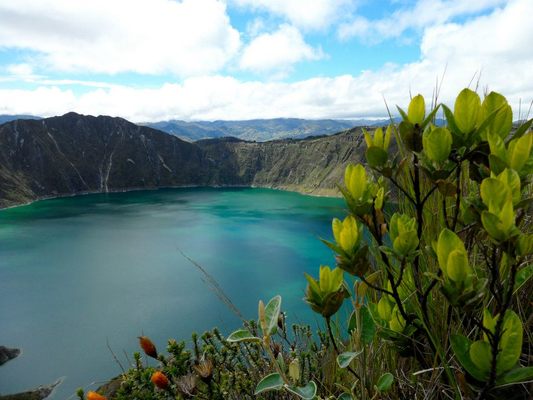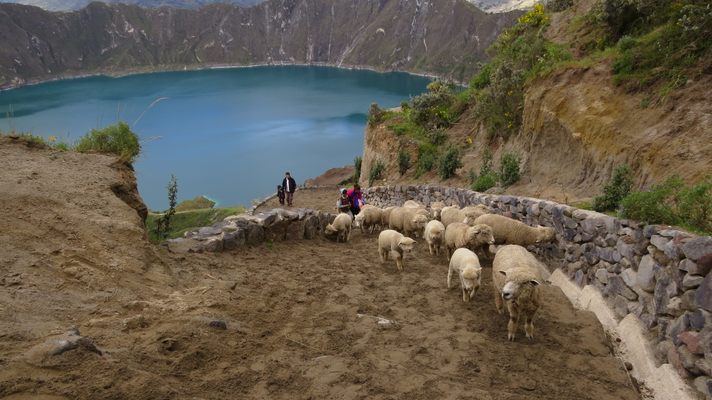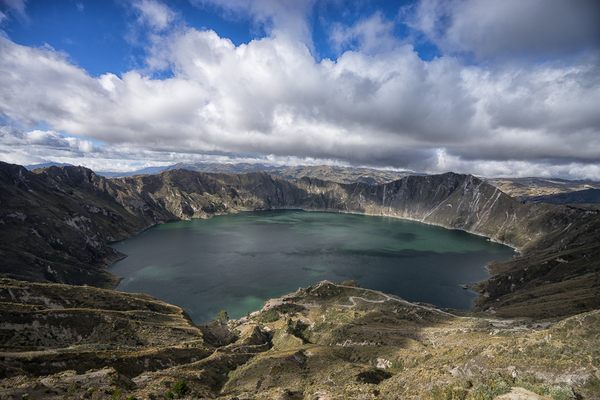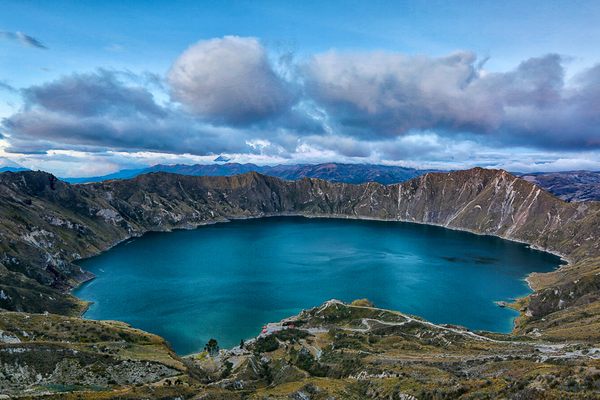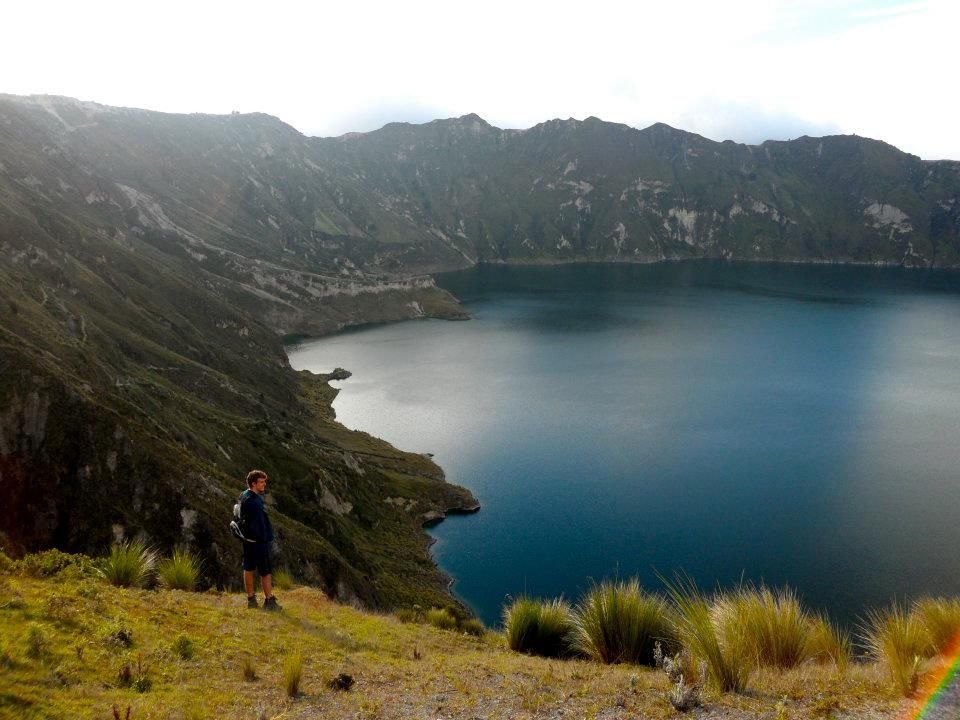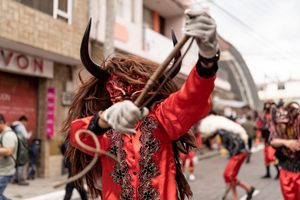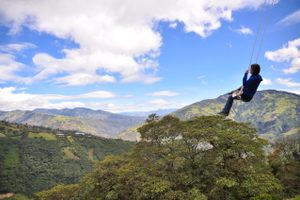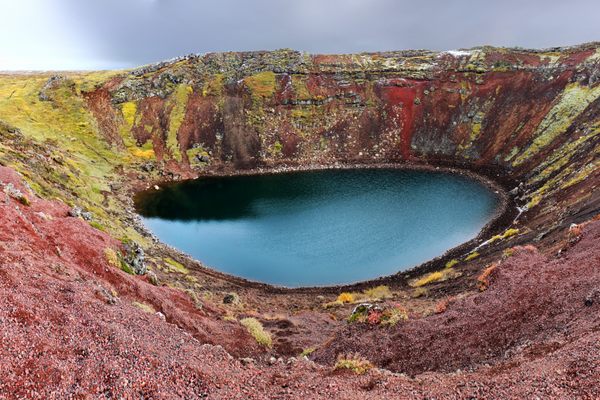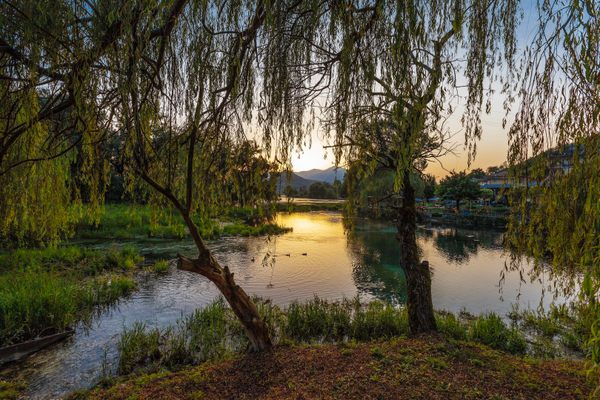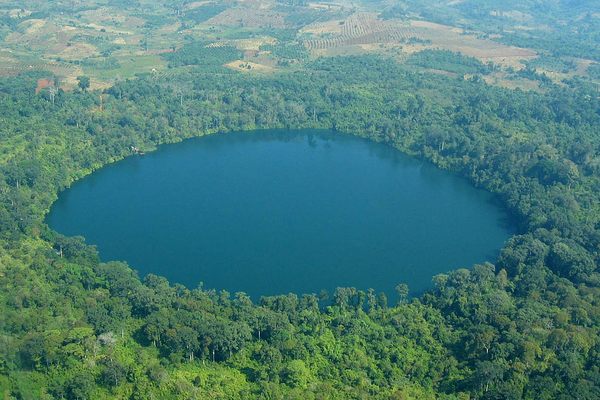About
When the Quilotoa volcano last erupted in 1280, it left behind a gaping caldera 3 kilometers (1.8 miles) across, which is now filled with brilliant turquoise water. The word "quilotoa" comes from the local Quechua language, a group native to the central Andes region.
At an elevation of around 3,800 to 3,900 meters (12,467 to 12,795 feet), Ecuador's Laguna Quilotoa is tucked within a rugged countryside, criss-crossed with well-worn hiking trails crawling all over the Andes mountain. The area is still home to many indigenous peoples, who make their living farming on the land much as they have for thousands of years. You'll see their homes and patches of farmland dotting the hillsides and meet them on the trails nearby, usually wearing traditional Andean clothing and often herding sheep with a llama or two.
The tiny town of Quilotoa sits nearby to the lake's southwest, and is the best place to view the lake and begin the hike around its rim. The hike along the rim of the crater is about 7.5 km (4.7 miles), offering four or five hours of views down into the deep lake.
Some of trails are suffering from erosion, especially those leading to the area at the base of the crater, where you can wander or even camp. But since the lake is only accessible by local buses and winding mountain roads, it remains less frequented than some of the region's other spots. On some days, you might hike the caldera's entire circumference and pass no one else—just a few wildflowers, and maybe a stray dog or sheep or, if you're lucky, a llama or two.
Quilotoa Lake is the beginning or end of a self-guided multi-day trek through the surrounding Andean mountain towns, often on poorly marked trails leading you into and out of rugged, deep canyons. The hike is an adventure and a challenge for any experiences hiker, but it's not a backcountry trek: you can stay in local hostels and hotels every night as you hike, complete with a hot shower and a delicious meal for about $15 a night. Most people do the hike in 3-5 days, and follow the route from Latacunga > Sigchos > Isinlivi > Chugchilan > Quilotoa > Latacunga. The hike in this direction has a total of 2152 meters/7,060 feet of ascent and 1184 meters/3884 feet total of descent, across roughly 30 kilometers/18.6 miles.
Related Tags
Know Before You Go
It costs $2 to enter the town of Quilotoa.If you just want to make a short visit, there are multiple buses each day from Latacunga to Quilotoa (1 hr 45 min). Take Zumbahua-Quilotoa-Chugchilan bus for $2.50. You will take this bus past a “Welcome to Quilotoa” sign. Don’t get off here. It’s not actually Quilotoa for a couple more kilometers. Once you approach a highway exit for Quilotoa, get off. The bus will continue left towards Chugchilan, but you will walk into town. Alternatively, you can make the three-hour direct drive from Quito. There's a wonderful hotel directly across from the entrance to the Quilotoa Lake called Hostal Chukirawa. Sitting at such a high altitude, altitude sickness prevention pills are recommended. Also, the town is foggy and cold - bring a warm jacket, and make sure that your hotel will be warm (such as a fireplace in your room and warm down blankets).
Wild Galapagos: An Ecological Wonderland
Darwin's legacy, snorkeling, volcanic landscapes & conservation insights.
Book NowCommunity Contributors
Added By
Published
July 15, 2016
